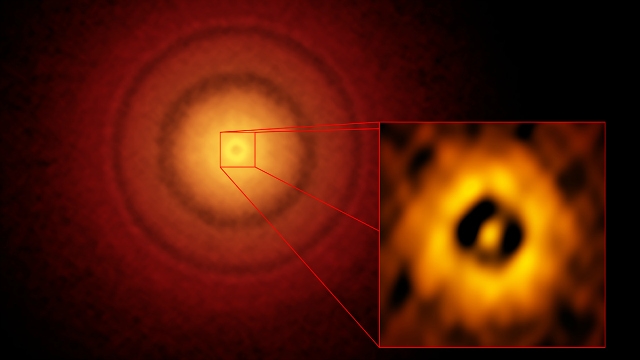Deep space imaging suggests Earth 2.0 could be forming right now
The ALMA observatory in Atacama has captured
new images of a planet forming around a nearby
Sun-like star, in the same relative position as Earth.
According to a recent study, a nearby Sun-like star
may have its own planet in an Earth-like orbit
someday.
New images from the Atacama Large Millimeter/
submillimeter Array (ALMA) reveal never-before-
seen details in the planet-forming disk around a
nearby Sun-like star, including a tantalizing gap at
the same distance from the star as the Earth is
from the Sun. This structure may mean that an
infant version of our home planet, or possibly a
more massive "super-Earth," is beginning to form
there.
The star, TW Hydrae, is a popular target of study
for astronomers because of its proximity to Earth
(approximately 175 light-years away) and its status
as a veritable newborn (about 10 million years old).
It also has a face-on orientation as seen from
Earth. This affords astronomers a rare, undistorted
view of the complete disk. Lead author Sean
Andrews said that the new ALMA images show the
disk in unprecedented detail, revealing a series of
concentric dusty bright rings and dark gaps,
including intriguing features that suggest a planet
with an Earth-like orbit is forming there.
Other pronounced gap features are located 3 billion
and 6 billion kilometres from the central star,
similar to the distances from the Sun to Uranus and
Pluto in our own Solar System. They too are likely
the result of particles that came together to form
planets, which then swept their orbits clear of dust
and gas and shepherded the remaining material
into well-defined bands. The study is published in
Astrophysical Journal Letters.



Comments
Post a Comment